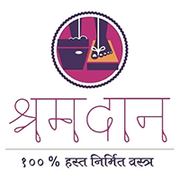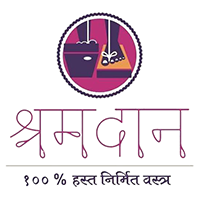Our world is dominated by fast fashion, where new trends lead to new clothing styles and new purchases of outfits we don’t really need. However, fast fashion has a dark side: it’s dangerous for our environment.
This threat has led to the much-needed rejuvenation of handloom clothing. These clothes are not just visually appealing and safe; they also carry the weight of our history, craftsmanship, and consciousness.
Whether it is your grandmother’s favourite heirloom saree or a simple kurti you brought from a local shop, these pieces are a living legacy and one of the most sustainable choices you can make today.
What is Handloom? A Legacy Stitched by Generations
Handloom refers to "fabric woven manually on a loom without the use of electricity." But to call it merely a technique would be an understatement. Each weave, each motif, and each thread represents a community, a region, and centuries of knowledge passed down by hand and heart.
From the cotton looms of Bengal to the earthy tones of Bhujodi shawls, Bharat is home to over 135 unique handloom clusters, each with a distinct identity, story, and symbolism. This deeply rooted connection to heritage is like a cultural memory made wearable.
Why Handloom is Sustainable?
Sustainability isn’t a new concept in Bharat. Our craftspeople have practised and mastered the art of handmade clothing long before it became a buzzword. Handloom, by its very nature, is slow, thoughtful, and gentle on the planet. Here’s what makes handloom clothing sustainable:
1. Low Environmental Impact:

Unlike power looms, handloom weaving uses little to no electricity, helping reduce the carbon footprint. Most handlooms also operate manually in rural cottages or small cooperative setups, minimising industrial waste.
2. Natural Fibres & Dyes:

Handloom clothing in Bharat is typically made from cotton, which is a safe and degradable material. These clothes are also made using natural dyes which are sourced from plants, minerals, or even kitchen ingredients, which eliminates any need for dumping hazardous dyes in water bodies.
3. Zero Waste Production:
There’s no mass production. Every piece is woven in small batches, often made to order. Any waste produced is either reused or repurposed, keeping excess material out of landfills. Even the discarded waste is 100% biodegradable, keeping the environment clean.
Handloom and the Hands Behind It

Behind every handloom clothing, there is a skilled weaver who dedicated years of their life to mastering the art of weaving. These are often rural artisans working from their homes or within a community cluster.
Moreover, according to a study, more than 70% of weavers are women, meaning every handloom clothing item you buy contributes to women's empowerment.
By choosing handloom, you’re:
- Supporting rural livelihoods
- Encouraging skill-based, dignified employment
- Helping preserve indigenous art forms that may otherwise disappear
Diversity within Bharat’s Handloom Clothing
Each region’s weaving tradition tells a story through their colours, motifs, and techniques. These are not arbitrary patterns but are inspired by folklore, mythology, nature, and daily life.
For example:
- Jamdani motifs often depict rivers and lotuses.
- Chikankari reflects Mughal aesthetics.
- Bandhani sarees are made using Bandhej.
The process is deeply tied to local biodiversity, seasonal rhythms, and climate-specific needs, making handloom not just wearable art, but an ecological practice.
The Future of Handloom: Traditional Roots, Modern Relevance
The 5000-year-old tradition that was once the pride of Bharat is gaining steady popularity. Today, artisans are not stuck on just the traditional techniques. They are experimenting with new designs and techniques that not only match but also surpass fast fashion trends.
Social media has also played a major role in the rising popularity of handlooms and bringing them back in the spotlight. E-commerce platforms have made it possible for people from major cities to buy clothes woven in a rural Bharat village with just a few clicks.
These are some of the handloom clothing that are getting popular:
- Sarees with minimalist borders
- Khadi shirts paired with jeans
- Handwoven cotton dresses, pants, and stoles
- Home furnishings like bedsheets, cushion covers, and table runners
How Can You Support Handloom (Beyond Wearing It)?
Supporting the handloom movement isn’t limited to just buying clothes. Here’s what you can do:
- Buy directly from weavers, cooperatives, or verified platforms
- Learn about regional weaves and share their stories
- Gift handloom during festivals and weddings — not just as a product, but as a value
- Take care of your handloom garments to make them last longer
- Encourage schools and colleges to include craft education in their curriculum
The Role of Shramdaan in Bharat’s Handloom Sector
Shramdaan started with a vision of providing exciting opportunities in rural Bharat, especially to individuals who are at the bottom of the pyramid. Under our programme the youths of our country got a chance to learn handicraft skills and full-time job opportunities as weavers.
Our artisans use their heart and soul in creating sustainable clothing and accessories like shirts, kurtas, sarees, yoga mats, bedsheets, and more. You can buy handloom clothes online from our platform, which acts as a bridge that joins these skilled artisans to the global market.
Conclusion: Wear Your Values, One Thread at a Time
Handloom is not a passing trend. It is a timeless testament to Bharat’s rich history, its weavers’ skill, and the possibility of living in harmony with the planet. Every time you wear handloom clothing, you’re not just wearing fabric — you’re wearing history, heritage, and hope.
Check out Shramdaan to explore and buy handloom clothes online in Bharat.





